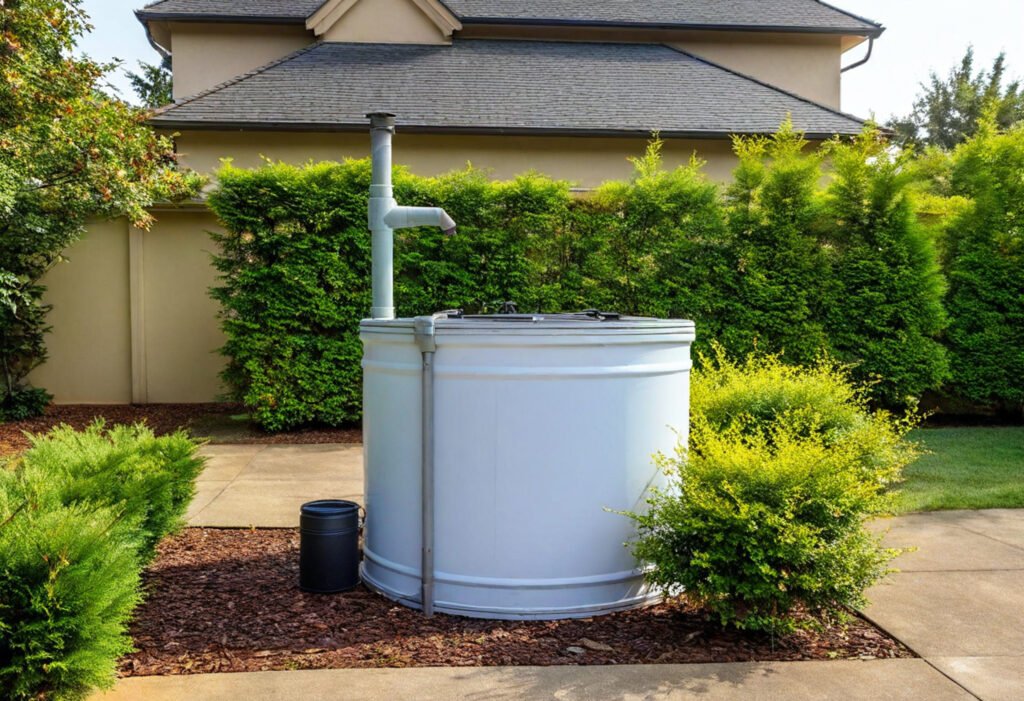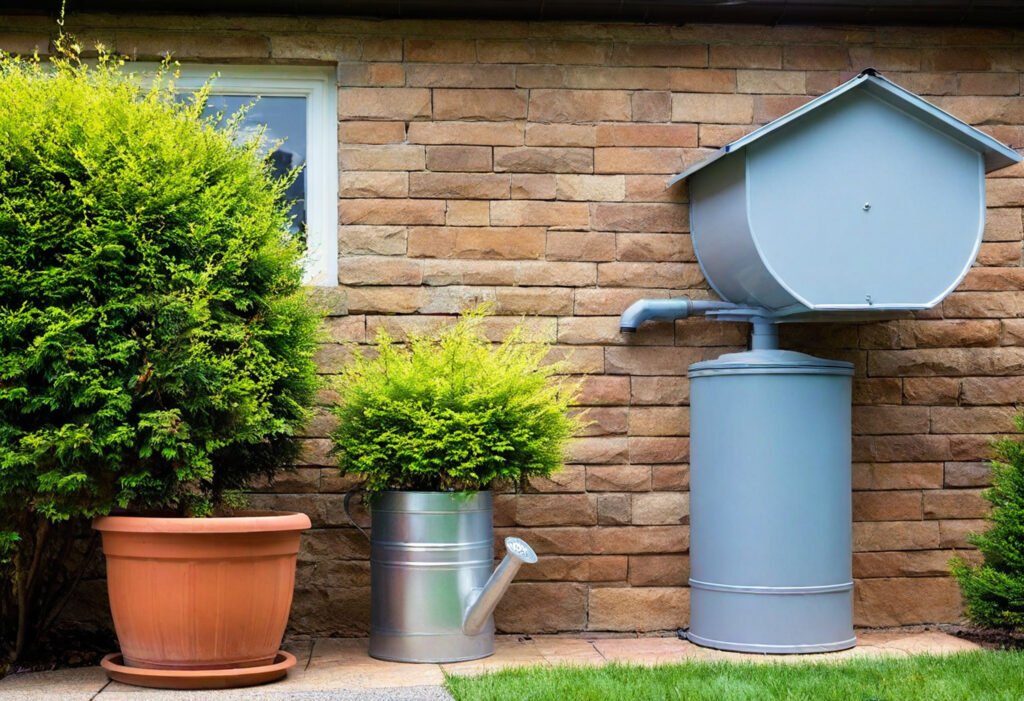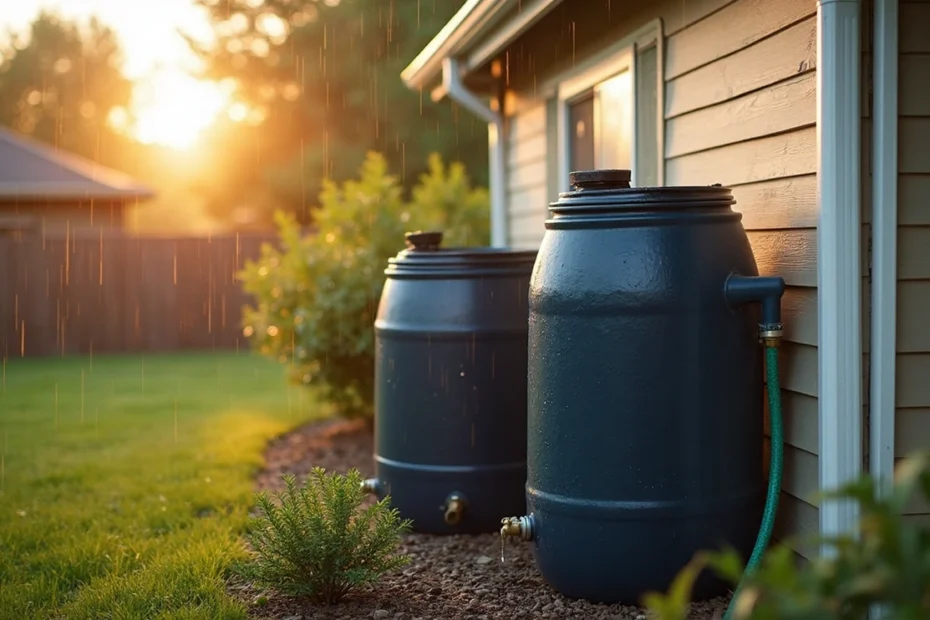My relationship with water conservation changed completely when I found out how to collect rainwater, and it saved me $800 every year on my water bill. The numbers amazed me – just one inch of rainfall on 100 square feet of roof gives you about 60 gallons of water. Nature provides this incredible resource right above our heads. Each square foot of roof space collects 0.623 gallons of water from one inch of rain.
The rainwater collection system turned out much simpler than I first thought. You can collect rainwater with or without gutters, and several methods work well for different homes. Rainwater proves to be more than just free water – it’s a reliable backup during emergencies. The storage potential is huge – my neighbor’s system uses three containers that hold 765 gallons total! The amount you collect depends on your roof’s slope and size, and the water pressure drops as your collection barrel empties.
Let me share everything I’ve learned about collecting and storing rainwater most quickly. You’ll learn to create a sustainable water source that could save you hundreds on water bills.
Understanding Rainwater Collection
Rainwater harvesting dates back thousands of years and remains valuable in today’s world. Let me explain what it involves, why it matters, and what you should know before getting started.
What is rainwater harvesting?
Rainwater harvesting lets you collect, divert, and store rainfall for later use instead of letting it run off. Anyone can capture water from rooftops or other surfaces and store it in tanks, cisterns, or barrels. Every rainwater harvesting system, whatever its complexity, has simple components: a catchment surface, a conveyance system, storage, distribution, and treatment facilities. Your system could be as simple as a rain barrel beneath a downspout or as complex as underground storage tanks.
Why collecting rainwater matters today
Collecting rainwater does more than save you money. It reduces the strain on existing water supplies and cuts down runoff, erosion, and surface water contamination. You can use harvested rainwater for landscape irrigation, stormwater control, wildlife watering, and maybe even fire protection.
Looking at the environmental impact, rainwater harvesting helps restore the hydrologic cycle. Natural landscapes allow approximately 50% of stormwater to soak into the ground, while developed areas let only 15% infiltrate, as 55% runs off. So, collecting rainwater helps recharge groundwater and keeps our waterways cleaner.
Plants love rainwater because it doesn’t have chemicals like chlorine and fluoride found in municipal supplies. The water’s natural nitrogen and perfect pH balance make it ideal for plant growth.
Legal and safety considerations
The benefits are clear, but you should know about legal and safety requirements. While rainwater harvesting is legal in all 50 U.S. states, regulations vary substantially. Some states offer incentives and rebates, while others restrict collection based on water rights concerns.
Your system should block light from entering storage tanks to prevent algae growth, and all openings need proper screens to keep insects and animals out. The CDC recommends filtering, disinfecting, and testing harvested rainwater regularly if you plan to drink it.
Many areas require backflow preventers or air gaps to separate harvested water from the main water supply when used indoors. Non-potable water pipes must also be clearly labeled.
How Much Rainwater Can You Collect?

Understanding potential yield is vital to planning rainwater collection. The mathematics behind rainwater harvesting shows how much water we can capture from the sky.
Basic formula to estimate collection
The standard formula for calculating rainwater collection is surprisingly straightforward: Roof Area (ft²) × Rainfall (inches) × 0.623 = Collection Volume (gallons). This conversion factor (0.623) shows how many gallons of water one inch of rain produces when falling on one square foot of surface.
A modest 1,000 square foot roof can collect about 623 gallons from just one inch of rainfall. My calculations for our 2,000 square foot home revealed that with our area’s annual rainfall of 30 inches, we could theoretically harvest nearly 37,380 gallons annually. Collection efficiency reduces this to about 80% of the theoretical maximum, which gives us approximately 29,904 gallons of usable water.
How roof size and rainfall affect yield
Several factors shape your actual collection yield beyond simple measurements. Roof material substantially affects efficiency through what’s called the “runoff coefficient.” Sloping smooth roofs typically have coefficients greater than 0.9, which means they capture over 90% of rainfall. Flat gravel roofs might have coefficients as low as 0.62.
The initial abstraction (water lost before collection begins) varies with roof slope and roughness. Flat, rough roofs have the highest abstraction rates (approximately 3.8mm), while sloping roofs lose much less (≤0.8mm).
Regional climate patterns directly affect collection potential. Areas with concentrated seasonal rainfall need larger storage capacity than regions with evenly distributed precipitation. Some European countries’ southern regions need larger storage capacities than mountainous area,s despite receiving less annual rainfall.
Using a rainwater collection calculator
Online rainwater collection calculators make these calculations easier. The Federal Energy Management Program offers a calculator that estimates monthly collection based on historic precipitation data for U.S. locations.
These tools need your roof dimensions and location information to provide monthly and annual collection estimates. Many calculators use local rainfall averages from 30-year weather datasets. This makes them excellent tools for sizing storage tanks appropriately.
These calculators proved to be a great way to get insights while determining our system size. They helped me see collection patterns throughout the year and avoid oversizing our storage capacity, which could create stagnant water and quality problems.
8 Ways to Collect and Store Rainwater
You’ve calculated your potential rainwater yield, so let’s take a closer look at practical collection methods. These eight proven approaches will help you tap into the full potential of this valuable resource.
1. Rain barrels
Rain barrels give you the quickest way to start rainwater harvesting. These containers collect water directly from downspouts and hold 50-100 gallons. They work great for beginners and fill up fast during rainfall. A typical roof needs just 1/4 inch of rain to fill a barrel.
2. Dry system
Dry systems let gravity do the work as rainwater flows directly into storage tanks through downpipes from your roof. The name comes from the fact that pipes contain no water after the rain stops. These systems deliver better water quality because water never stands in the pipes. They perform best with simple roof designs and tanks placed near collection areas.
3. Wet system
Wet systems differ by routing downpipes underground to collect from multiple roof areas. Water stays in the underground pipes between rainfalls. The hidden pipes look better, but you’ll need mosquito protection and regular draining to prevent stagnant water.
4. DIY standalone catchment
Standalone catchments work great for properties without suitable roof access. These structures work like giant upside-down umbrellas that funnel rain into storage containers. They deliver results when properly anchored, despite being top-heavy.
5. Using tarps and containers (no gutters)
Tarps provide a flexible and cost-effective collection option without gutters. Create a low point in the center, place a container underneath, and you’ll collect substantial water. A 4’x6′ tarp can fill a 30-gallon barrel during a single 3-hour rain shower.
6. First-flush diverters
First-flush diverters enhance water quality by redirecting the original contaminated water away from storage. These simple devices need minimal upkeep while extending pump and appliance life substantially.
7. Underground cisterns
Underground cisterns store large amounts of water beneath your landscape. Your tanks stay protected from freezing and algae while preserving valuable land space. Made from reinforced concrete, fiberglass, or steel, these cisterns work perfectly for drinking water.
8. Hybrid systems with composters
Hybrid systems combine smoothly with composting to maximize sustainability. Many municipalities offer discounts and incentives for these integrated setups. You’ll save money and reduce waterway pollution while providing garden irrigation.
Setting Up a Rainwater Collection System

My first rainwater collection system needed careful planning, but brought quick benefits. Let me share what I learned about creating a quick setup.
Choosing the right location
Your system’s success depends on location choice. Storage tanks work best in shaded areas that prevent algae growth and UV damage. Elevated tanks give better water pressure and accessibility in gravity-fed systems. Tanks should be at least 15 feet from building foundations to avoid water damage.
Essential components: gutters, tanks, filters
A good rainwater system needs three key elements: catchment, conveyance, and collection—the 3 C’s. Smooth impervious surfaces make the best catchment areas, with metal roofing leading the pack. Gutters and downspouts make up the conveyance system and should slope ¼ inch per 10 feet of gutter length. Storage options range from basic 50-gallon barrels to large underground cisterns that hold thousands of gallons.
How to collect rainwater from gutters
Clean, working gutters and downspouts start the collection process. A debris screen keeps leaves and large particles out. A first-flush diverter helps redirect the initial contaminated water away from storage. The final step connects your downspout to the storage container with proper piping or diverters.
How to collect rainwater without gutters
You can still collect water without gutters. Containers placed right under the roof drip lines catch water as it falls. Angled tarps work too—a 4’x6′ tarp collects plenty during one rainfall. Larger areas might need standalone catchment structures that look like upside-down umbrellas.
Preventing overflow and algae
Good overflow management keeps foundations safe. Overflow pipes should match inlet pipes in size. Water should flow away from buildings toward gardens or extra storage. Dark, opaque materials or dark paint keep algae away. Shaded locations cut down algae growth substantially.
Maintenance and winter preparation
The system lasts longer with regular upkeep. Clean gutters, screens, and filters every three months. Look for damage after big storms. Cold climates need winterizing—drain everything completely. Store removable parts inside and redirect downspouts around the system until spring arrives.
Conclusion
Rainwater collection is one of the most practical ways to save money and support environmental sustainability. This simple practice has saved me $800 each year during my experience. It provides a reliable water source for my garden and outdoor needs. The joy of using a resource that would otherwise go to waste is amazing.
The collection methods I described above work well with any home setup, whatever type of gutters you have. You can start small with simple rain barrels or go big with underground cisterns. Your system can grow as your confidence builds. Even collecting rainwater from just part of your roof brings great benefits.
The best part is that rainwater harvesting helps us reconnect with nature’s cycles that modern life often hides from us. Plants love chemical-free rainwater, and our groundwater systems do better when we cut down on runoff. Rules differ by state, but people widely accept this practice because its benefits are clear.
Here’s my suggestion: Begin with one rain barrel under a downspout. You’ll see your water bills drop while your garden thrives. Rainwater harvesting needs some original planning and setup, but upkeep takes little time. The financial and environmental benefits last forever. These advantages have shown me firsthand that rainwater collection is one of the smartest investments for my home and our planet.
